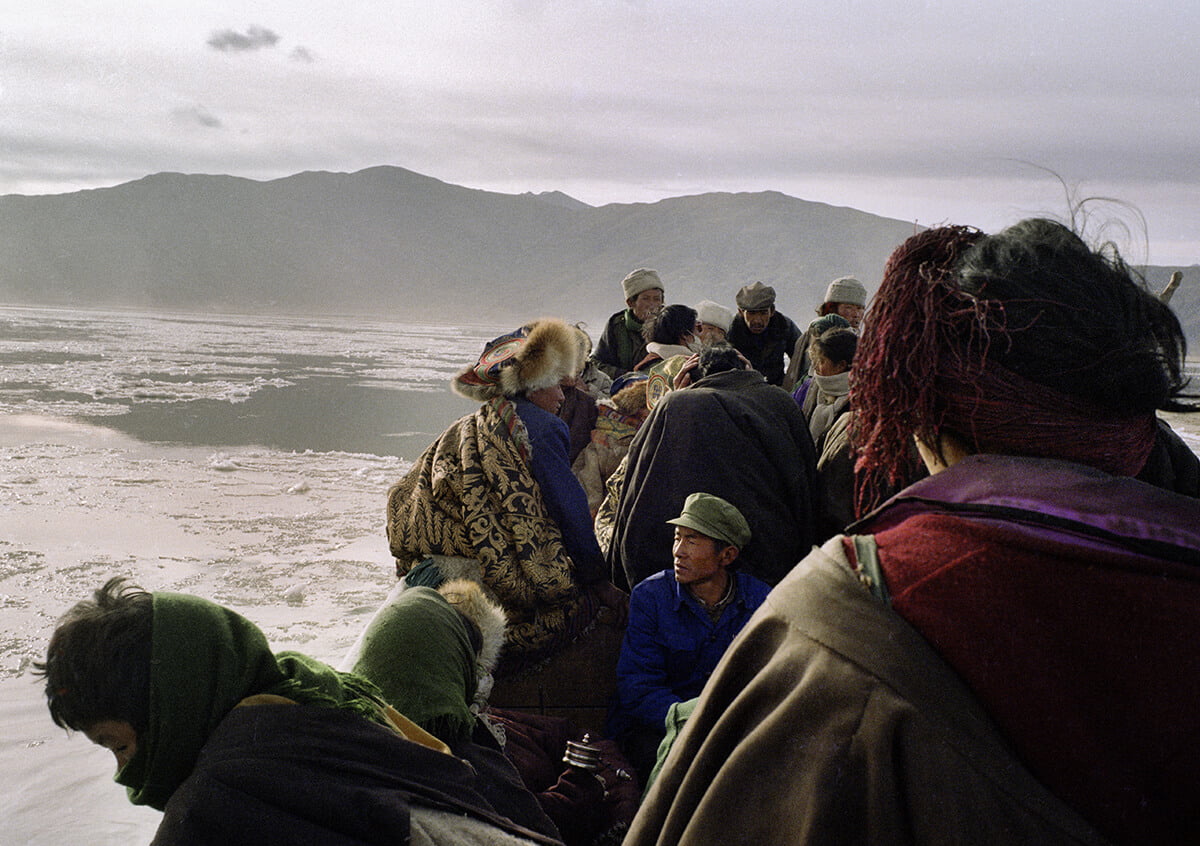EDITORS’ PICK
Lost in the Dazzling Forest
CIVILIZATION
Civilization Editors’ Pick
Following Emma Lewis’ selection of winning images for our CIVILIZATION call for entries, this compilation of 20 images, selected by the Life Framer editors represents some of the other talented photographers whose work struck us and left a mark. Each a stunning image worthy of exposure and attention…
These are intended to be a conversation starter… so feel free to join the discussion on our social networks.
BANNER IMAGE COURTESY OF NIMROD GETTER
www.nimrodgetter.com
“Tibet. Perched just below the peaks of great mountains. Harsh. Extreme. Not much for granted. Life is hard from where we look. One has to be kind to survive. One has to be committed to surpass. A sea of condensed energy sitting so high up that it takes the place of the missing oxygen and makes you feel – all at the same time – how insignificant and omnipotent you are. Crystal clear it lays in front of you, bare and indifferent. Raw. Real Raw. Connection is established without effort. A smile and a smile. I am told it is not like that anymore. Well, things change. It used to be.”
Editor’s comment: A rich and immersive view into the immense landscape of Tibet, the crisp, cold air and limitless quiet almost palpable, even if even mode of transport is unclear.

IMAGE COURTESY OF LISBETH MONÉTON
www.lisbethmoneton.com
“Burma, February 2020, From a workshop with Steve McCurry. The one-leg-rowing Fishermen with their small helpers, often their sons, at Inle Lake in early morning.”
Editor’s comment: The near symmetry and well-handled lighting make for something really special – these two fishermen and their sons picked out in golden hour light and low-level haze. It’s a fascinating document of a life of tradition far from our own, taken in the stewardship of McCurry who has spent his career telling such stories from all of the world.
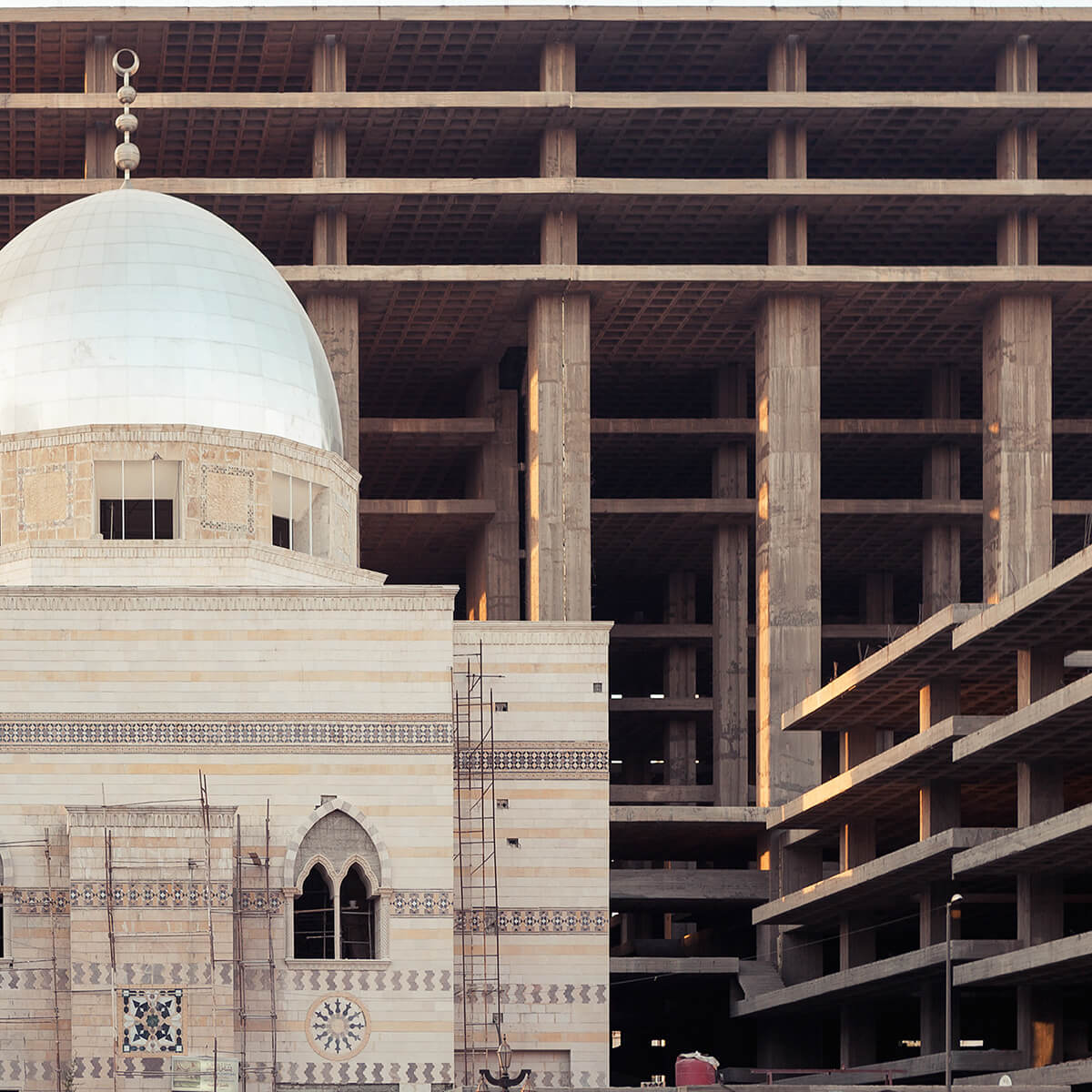
IMAGE COURTESY OF ROGER GRASAS
www.rogergrasas.com / @rogergrasas
From the series HaAretz – “HaAretz provides a record against oblivion of the lands and towns described in the Bible amidst a globalized world of consumerism, hyper technicality, mass tourism and war devastation. Produced between 2010 and 2019 in the states that currently conform the main territories of Tierra Santa (Israel, Palestine, Egypt, Jordan, Syria and Saudi Arabia), the project has been conceived with the aim to document the locations of some of the most celebrated events of the Sacred Scripts: among them, “Genesis”, “Exodus”, “The Lives of the Prophets”, as well as the birth, miracles and passion of Jesus of Nazareth. Named ‘HaAretz’ after the Aramaic language that was supposedly spoken by Jesus Christ, the ‘Promised Land’ serves here as the background of a reality irreversibly mediated by the camera lens. From Eufrates to the Jordan River, from Dead Sea to the lake of Tiberias, and from Jerusalem to Damascus, these religious places exist as merchandised spaces of leisure. Within a globalized world of consecrated frontiers, landscapes are consumed, and so are history and the past…”
Editor’s comment: A stark, expertly framed juxtaposition between tradition and modernity, culture and consumerism, character and genericism, soul and perhaps soullessness in the Middle East. In this context it perhaps represents the inevitable slow creep of Western civilization, and as Roger puts it, the decline of the richness of history.
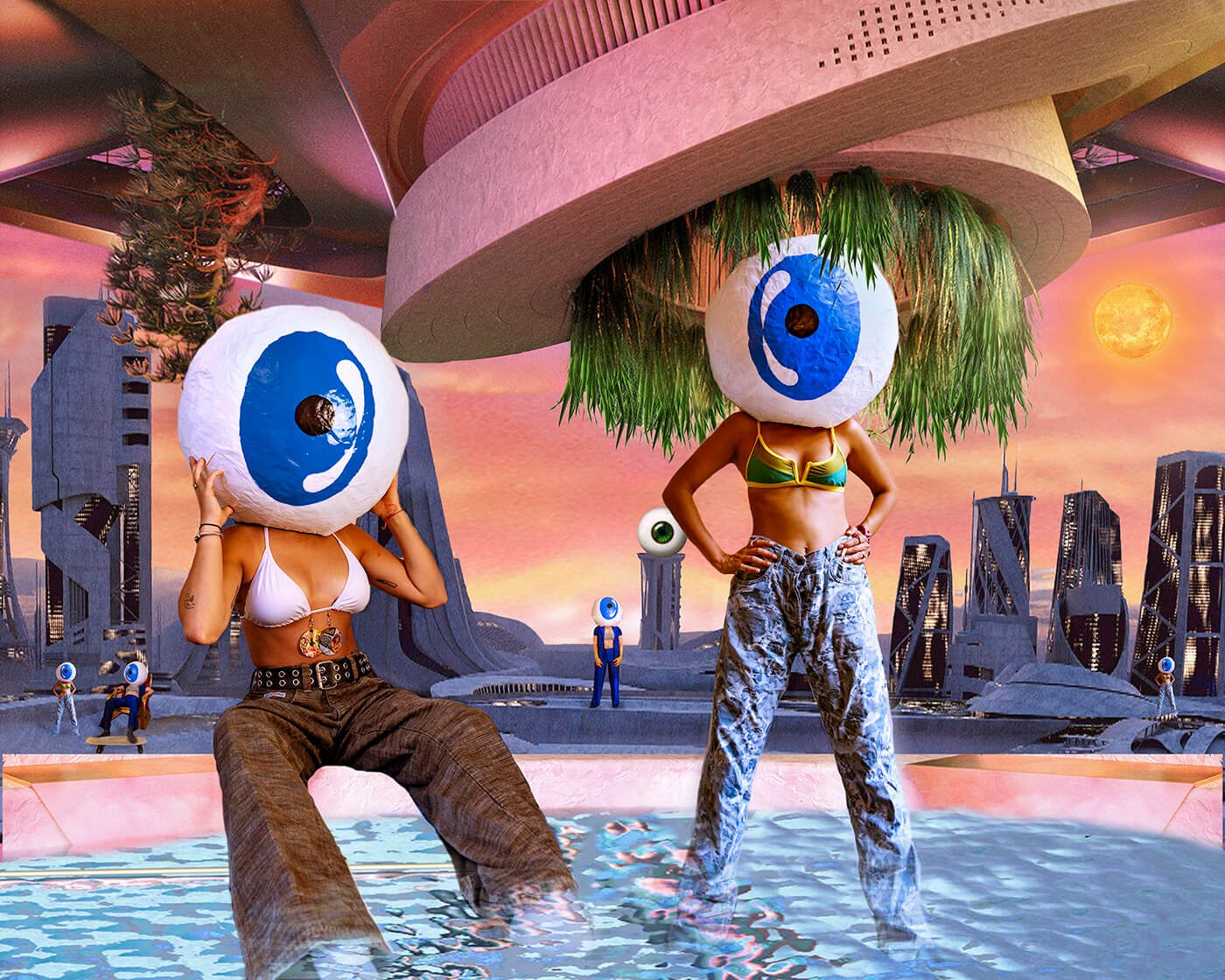
IMAGE COURTESY OF LITSA SURSOCK
www.litsasursock.com / @1itsa
”I am a Greek Lebanese woman who was raised in Hong Kong and went to Pratt Institute eventually to continue my vision of my multicultural unique view I articulate through my photographs. I want to build a beautifully surreal world people of all walks of life can see themselves escaping to.”
Editor’s comment: An image that deserves mention for its bold creativity, Litsa takes themes from today’s civilization – urbanism, surveillance, female empowerment – and blends them together into a strange and arresting neon fantasy. It’s zany and puzzling, and all the more absorbing for it.
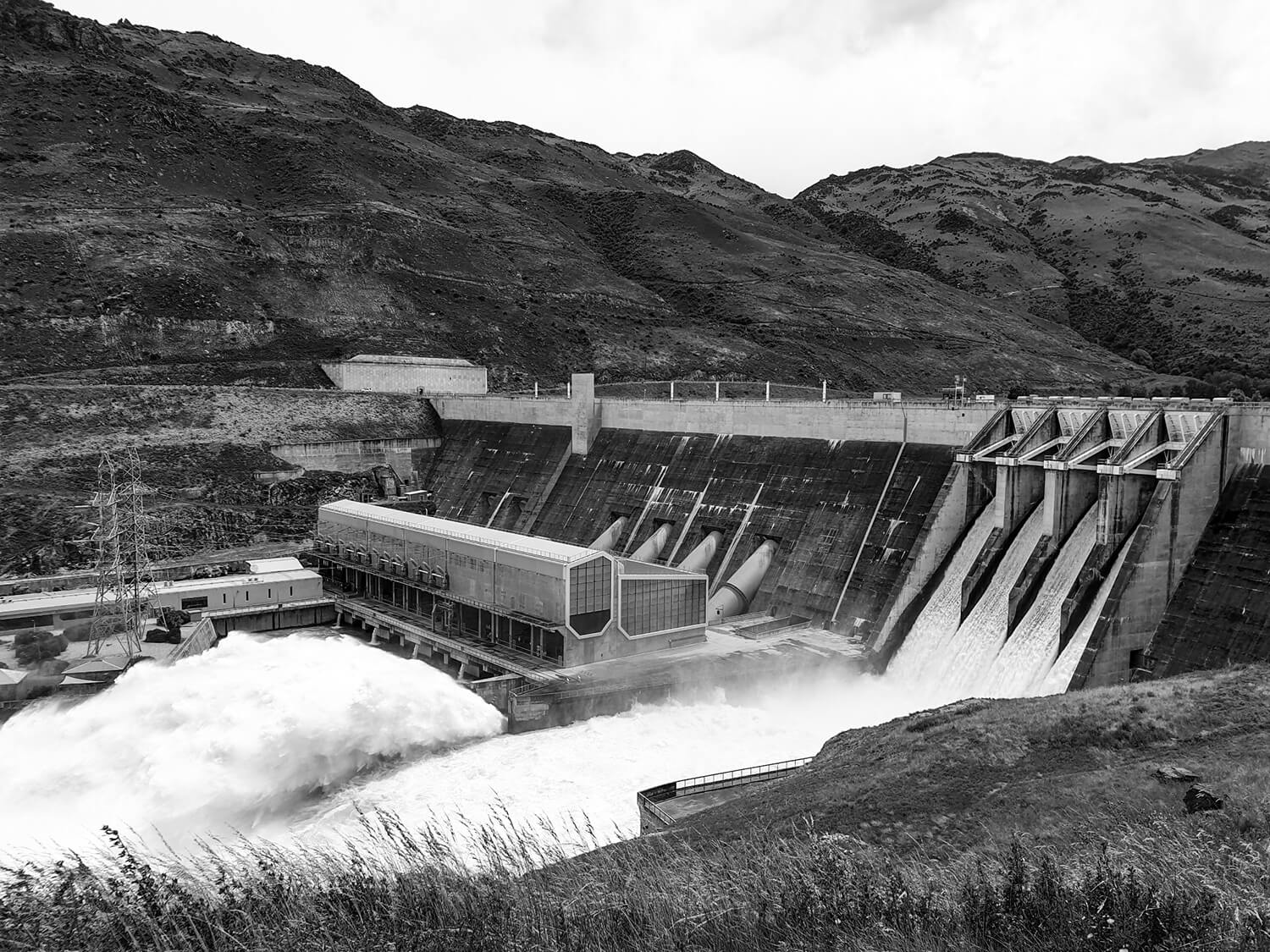
IMAGE COURTESY OF SUMITRA RUDRA
”Clyde Dam, New Zealand. One of the measurements of human progress is improvement in quality of life. Hydro-electric, controversial or not, has contributed to human progress around the world, particularly from the beginning of the 20th century. This image also has a personal significance to me. As a child, I grew up close to a dam site, when my father an engineer, was working on the construction of a hydro-electric dam in Malaysia. We lived on this site for 4 years, during which there were many excursions to see the mammoth construction come to life, a small section at a time. This was over 35 years ago. In 2019, during a visit to New Zealand with my husband and children, coming across the sight of a dam “in full action” moved me at many levels. The nostalgic reminder of my childhood combined with the sight, sound and smell of the thunderous power of water generating electricity, found me transfixed at this spot for some time.”
Editor’s comment: Perhaps due to Sumitra’s choice to capture this scene in black and white, it has a quiet, almost tranquil presence, at odds with its immense scale and ‘thunderous power’ as she puts it so eloquently in the accompanying text. It makes for something poetic – beautiful in its own right but also edifying in the systems that power our world.
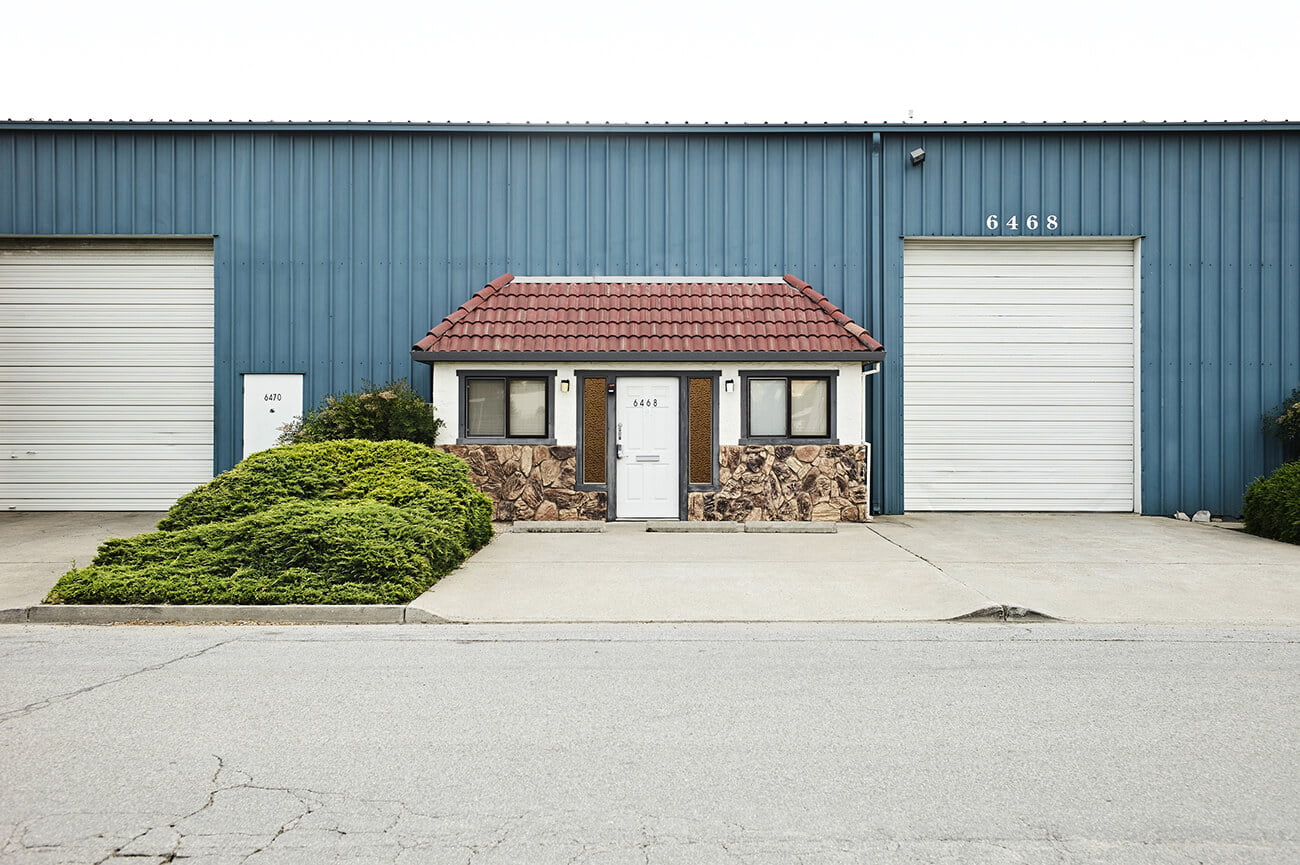
IMAGE COURTESY OF JOHN WILDGOOSE
www.johnwildgoose.com / @relentless_random
Editor’s comment: With precise framing John captures this American home that appears at risk of being subsumed by the imposing, disproportionately large corrugated iron structure behind it. It’s a bizarre amalgamation of architectures that invites one to think about aesthetics versus utility and the perplexing nature of modern priorities. Who lives here and needs, as is suggested, a garage several times bigger than their home?
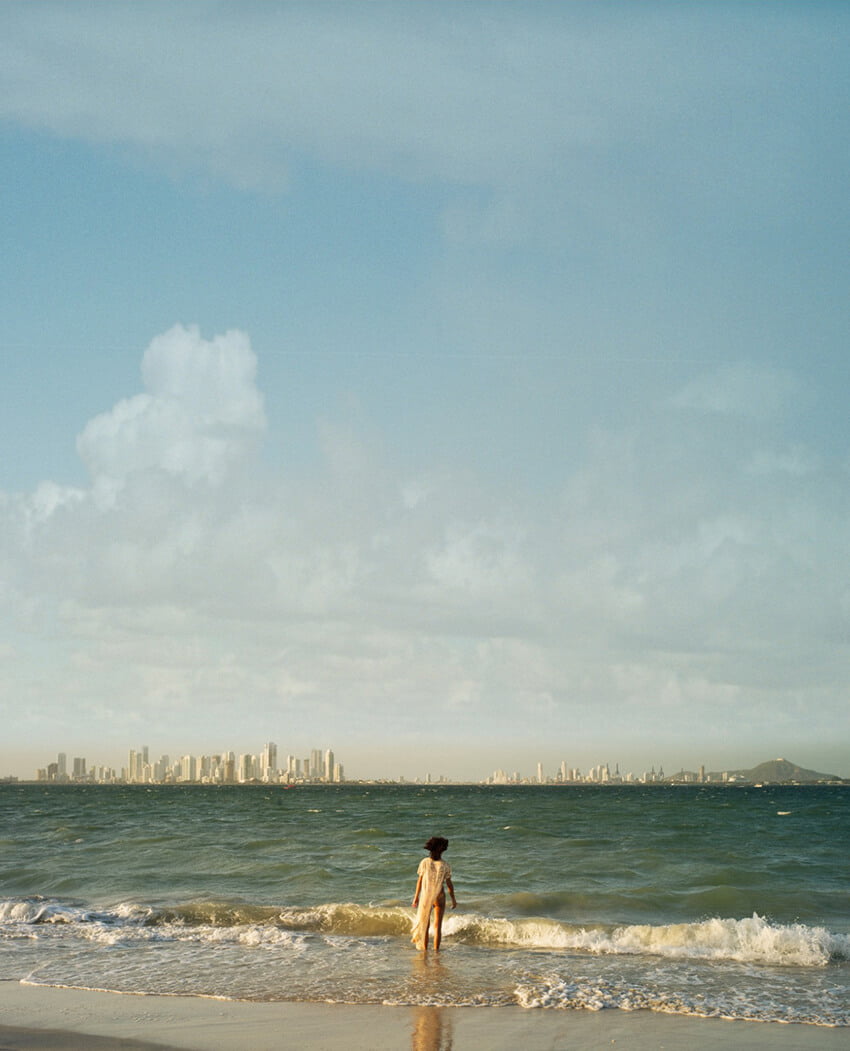
IMAGE COURTESY OF SERGIO CASTRO SAN MARTÍN
www.castrosanmartin.com / @sergiocastrosm
”The possibility of giving a second life and look at certain characters and spaces, sums this search up well that translates into stories that have the idea of absence, emptiness and loneliness as a thread, where a sense of “timelessness” prevail through a chromatic bounded palette defined in each painting by formal visual neatness and minimalism, independent of the time and place where they were made. In this work, everything happens exactly like this: objects, nature, humans, buildings and even the sky take on the same corporeal dimension and narrative weight. In the end we are all contoured surfaces that rub shoulders against each other and inhabit space.”
Editor’s comment: A gorgeous image which, through empty space and distance, explores our connection to nature, to civilization and to one another – tiny dots in the near-infinite vastness of our modern world. The golden hour lighting enhances this poetic feel, as does the framing off the rule of thirds, emphasizing the enormity of the sky.
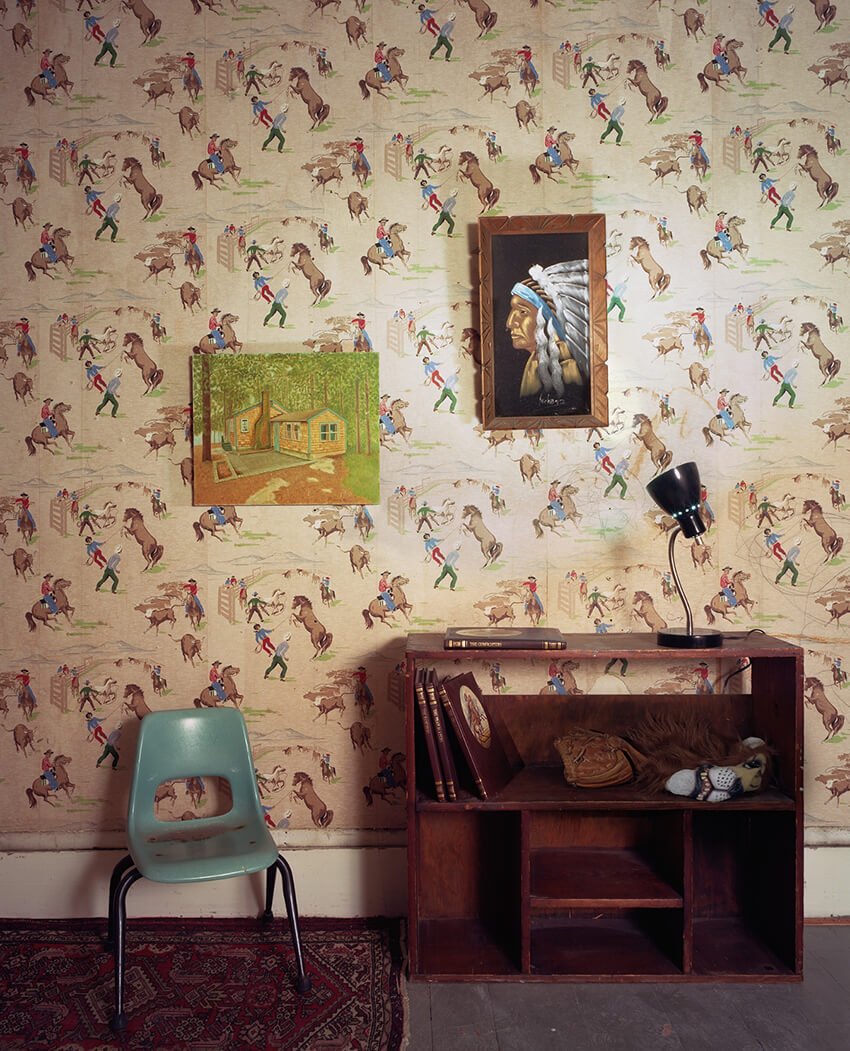
IMAGE COURTESY OF SARAH MALAKOFF
www.sarahmalakoff.com / @smalakoff
From the series Personal History – “In this series I look closely at objects we display within the home that reference history and culture. These items may speak to the ancestral lineage of the occupant or perhaps merely a desire to appear sophisticated or knowledgeable. Whether they are paintings, photographs, or sculptures of historical figures or events, documents or books, they point to a longing for connection to the past and an engagement with the world at large. They resonate, often humorously or uncannily, with the other objects and architecture that surround them. This collection of private spaces asks the viewer to imagine the people who inhabit them and their relationship to these histories.”
Editor’s comment: Sarah carefully documents a quiet space with clues to the person who may inhabit, or as the fading wallpaper might suggest, have inhabited it. There is childhood innocence here – the playful illustrations, baseball glove and lion hat – but also questions to be asked of that innocence. As the old romanticized ideas of ‘cowboys and indians’ are beginning to be tested, recognizing the role of colonialism on indigenous communities and re-appraising the notion of ‘goodies and baddies’, it feels dated and unsettling – a document of a different time with a more naïve viewpoint towards events of history.
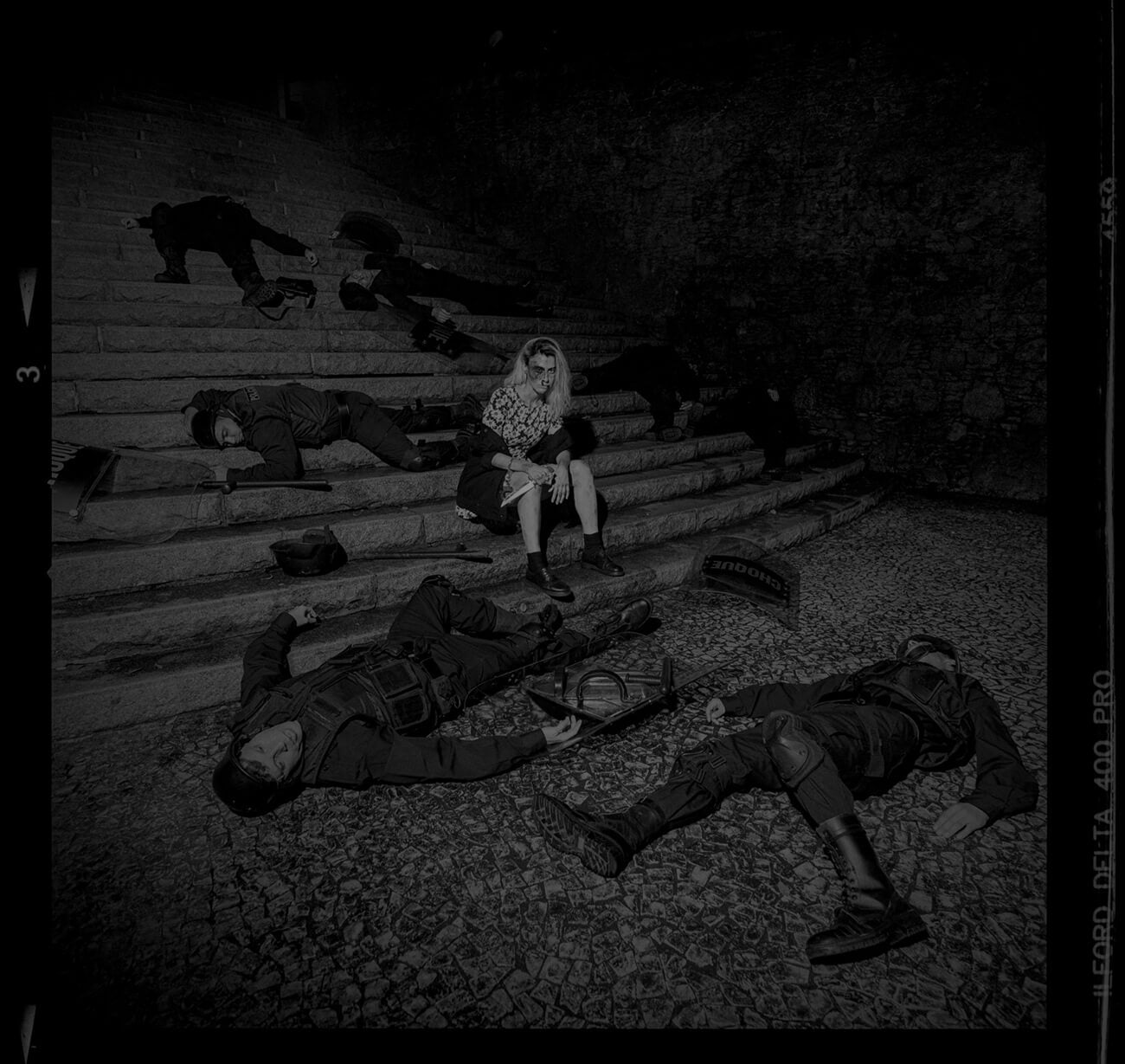
IMAGE COURTESY OF THALES BANZAI
www.thalesbanzai.com / @thalesbanzai
”They’ve tried to shut my mouth. They’ve tried to blind my eyes. But to their surprise. This only amplified my pride.”
Editor’s comment: A creative response to the current global protest against policy brutality, Thales empowers this young objector in a shocking, violent way, using a murky and washed-out color treatment that emphasizes its illusory quality. It’s memorable and provocative, paired with a poetic statement to elicit a conversation on current events.
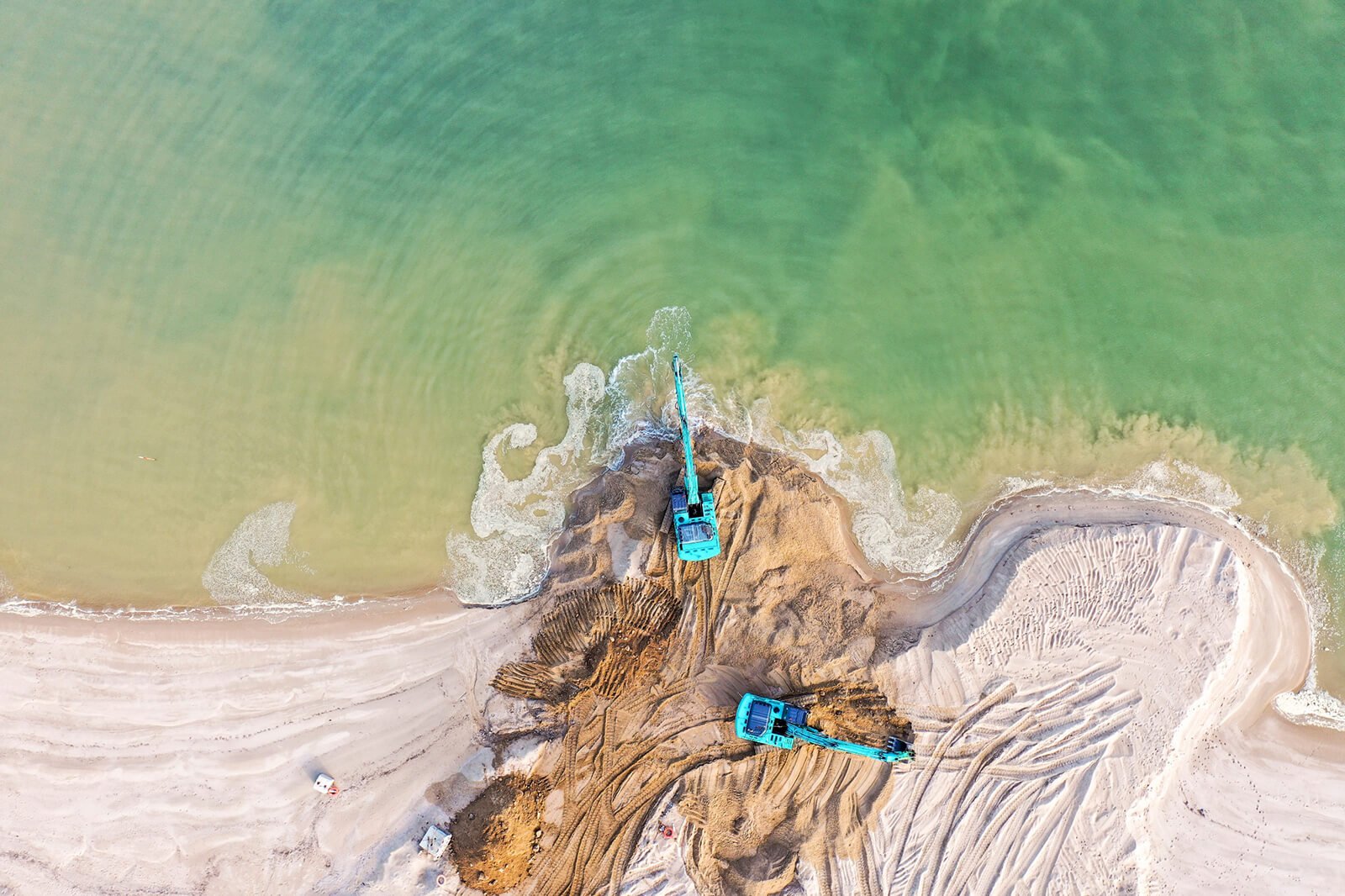
IMAGE COURTESY OF SCOTT R. MCMASTER
www.untitledartist.com / @mc.untitled
”Our Obsession With Sand. Hong Kong is not known for its beaches despite boasting some beautiful natural ones in the far corners of its country parks, the majority of beaches for public use are manufactured. This series follows the final stages of the city’s newest beach at Lung Mei, as copious amounts of sand are offloaded, dredged, and slowly formed into a familiar straight gently sloping line that merges with the sea. A once beautiful and natural sea shore, filled with urchins, molluscs, crustaceans, and other endemic sea creatures was forced to give way due to our obsession with sand. Now large and menacing groins of stone and cement jut into the sea to form the boundaries between human leisure and the natural world. From above we see the machines shifting and forming the precious commodity into its proper shape. The silt mingles with the sea water within the floating barriers but eventually the rains and currents drag them out into the harbour and back to the natural shoreline.”
Editor’s comment: There is a strong aesthetic beauty to Scott’s image, in how the turquoise diggers shine luminously against the natural earthen tones, and of the multitude of intersecting patterns – wave lines, concentric ripples and the tyre tracks of heavy machinery. But it also causes us to consider something to which most of us probably give little thought – that many beaches are man-made, that we seek to replicate an idealized beauty for what they should be, and that much is destroyed in their creation. It’s an interesting and important comment on the impact we wreak, often inconspicuously, on the natural world – just one example damaging nature in a bid to get close to it.
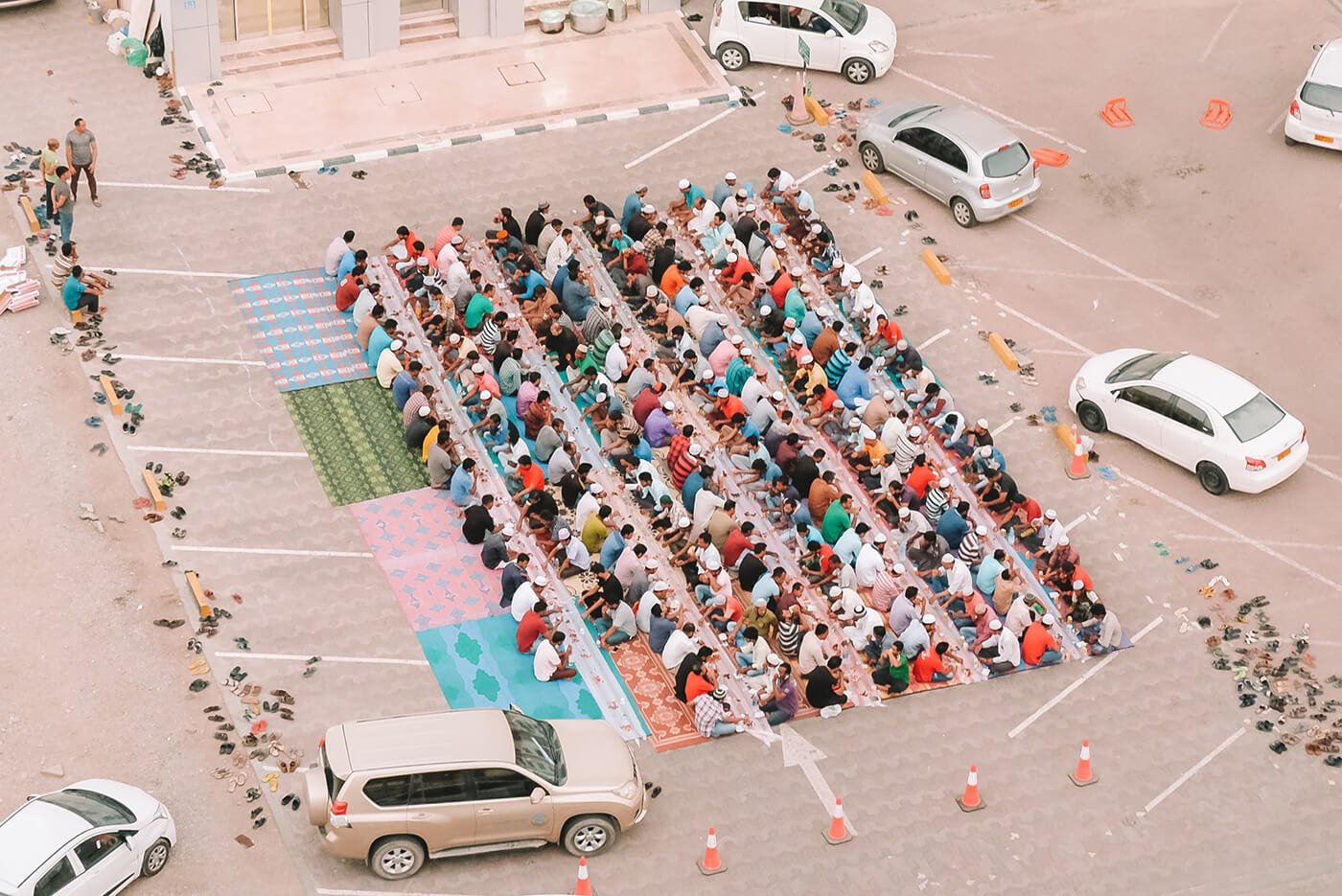
IMAGE COURTESY OF MARGAUX BLACK
www.margauxblack.com / @margauxblack
”Captured during Ramadan in Oman, the group of men come together to break their fast in a carpark. Leaving their shoes scattered to the sides, it has a great sense of community, though at the same time leaves you slightly unsettled – thinking where are the woman? They break their fast separately on coloured mats of their own with children. This religion and these traditions make up a civilisation vastly misunderstood by the rest of the world, simply because it’s different.”
Editor’s comment: Like the rugs these men sit on, the overall impression of this image is a beautiful patchwork of colors, textures and geometries. It is packed full of information and detail, but can be appreciated at a macro level. As Margaux describes in her statement, it gives an interesting glimpse into religious customs in Oman, intended to inspire understanding and amity.
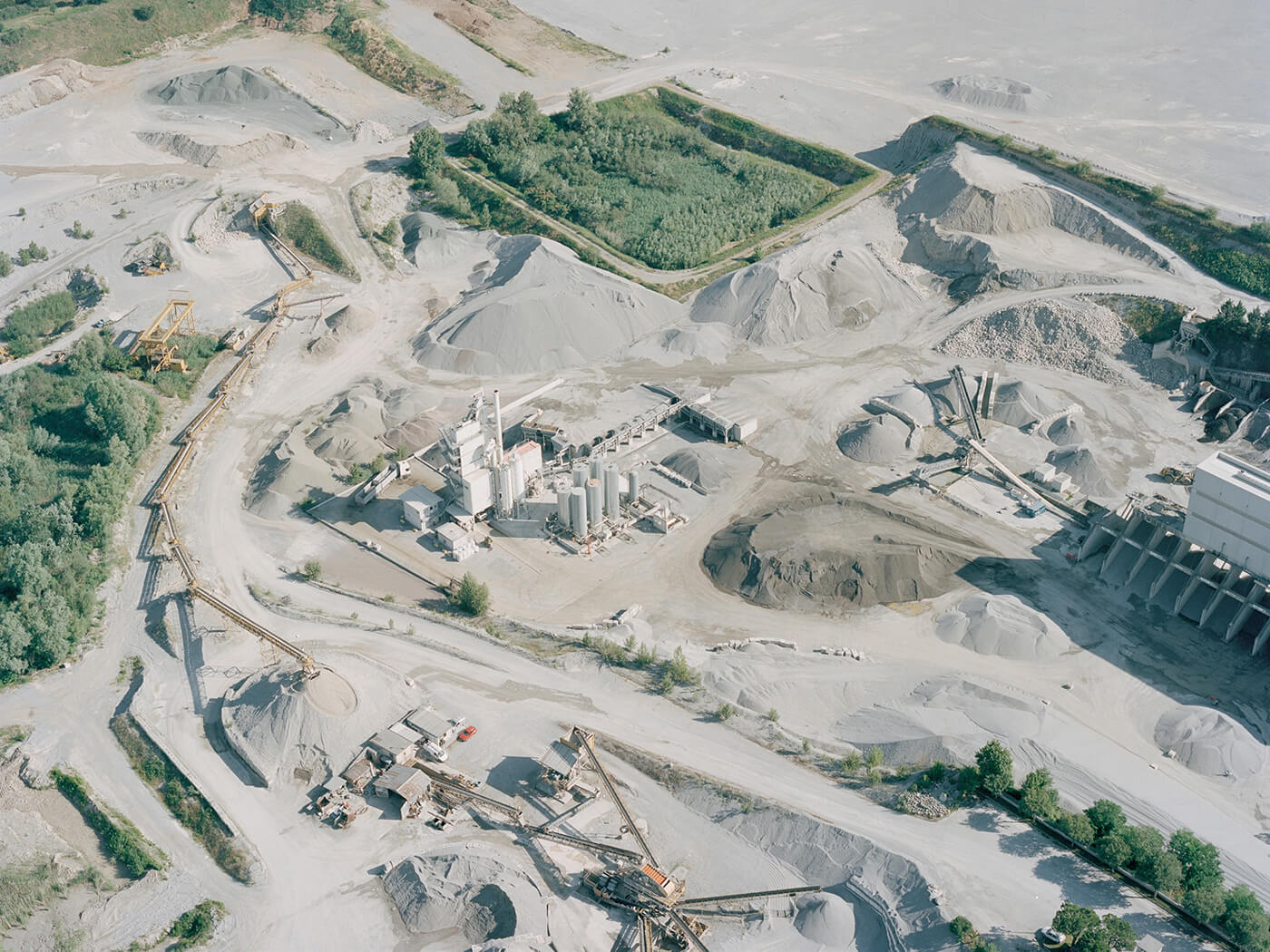
IMAGE COURTESY OF MATTIA MARZORATI
@marzoratimattia
From the series The Land of Holes – “Over the last hundred years the city of Brescia and its province have experienced an exceptional economic development, mainly thanks to the engineering and mining sectors, to whose gravel and sand quarries we owe the name of “land of holes”. Thanks to the presence of these huge quarries to be filled, the business of waste and the uncontrolled production by many companies have led to disastrous consequences for the territory and the people: the incidence of cancer and other pathologies is much higher here than in rest of the country; moreover, the province can boast the presence of one of the biggest incinerators in Europe, the greatest concentration of landfills in the continent, the largest radioactive site in Italy, the widest and worst contamination by PCBs (polychlorinated biphenyls) ever recorded in the world.
People living in the area reflect the contradictions created by an unsustainable, self-destructive and difficult-to-eradicate economic system. Public committees and environmentalists, who are trying to fight these policies, face the stark opposition from institutions and the indifference of most of their fellow-citizens, poorly informed and mainly concerned about maintaining their economic well-being. While in the sadly known Land of Fires in Campania the waste sector is managed by the mafia (and where it is estimated that around 10 million sqm of special waste are disseminated compared to the 98 million in the area of Brescia), here institutions control and legalize trade in highly toxic materials too. In this context, the struggle of a few people seems to be the only – perhaps utopic – form of opposition.”
Editor’s comment: A beautiful – if such a word can be used in this context – image that captures the immensity of mining operations in Brescia, bringing into sharp relief of the impact of our civilization on the environment. The pockets of nature appear to be clinging on for dear life, barricaded in against the expanding human footprint, colorless and emotionless.
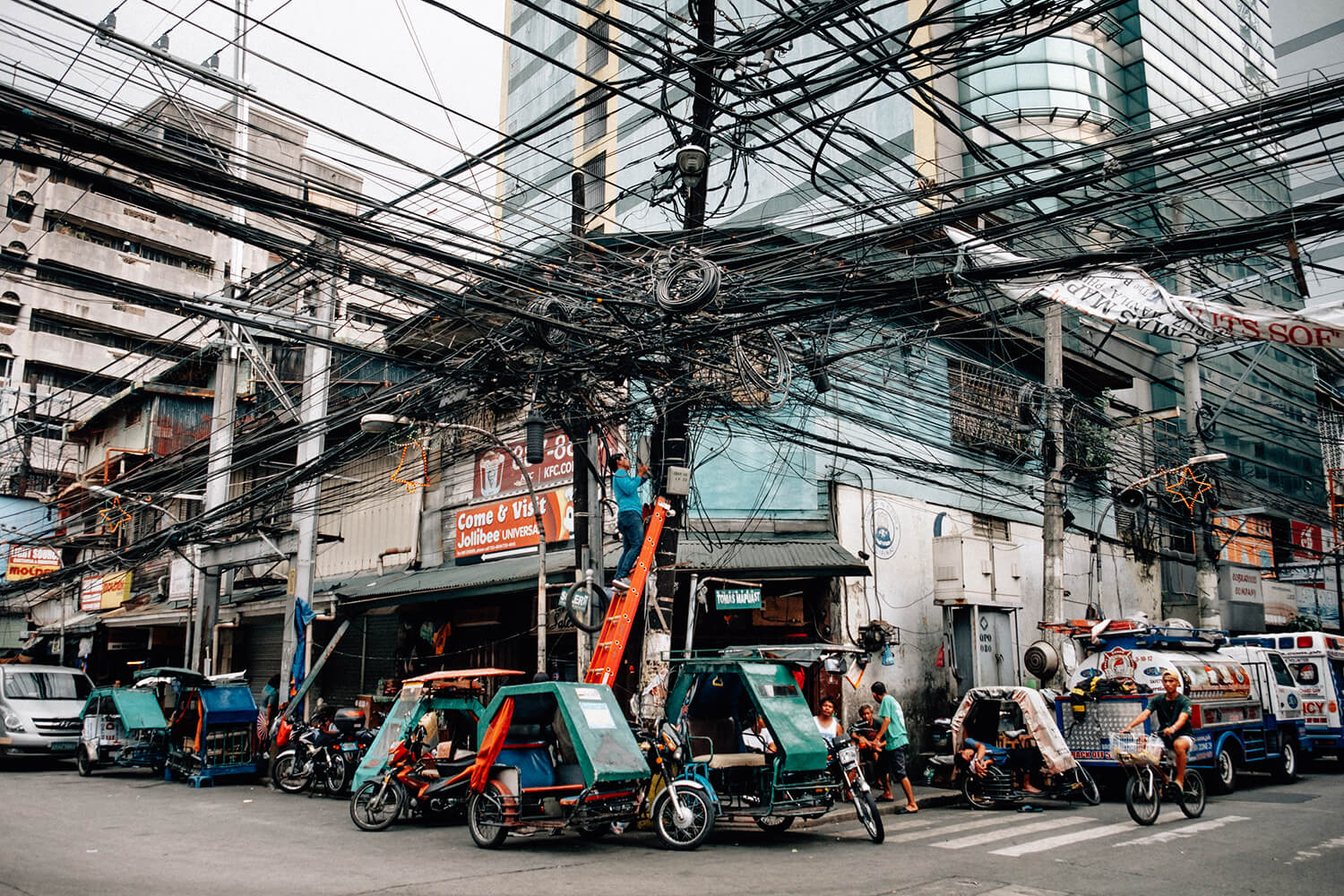
IMAGE COURTESY OF TONY MENIAS
www.beloveful.com / @beloveful
Editor’s comment: A brilliant ‘slice of life’ on a street corner in Manila, with Tony’s careful color treatment bringing out the reds and turquoises against the grey and the enormous jumble of electricity cables perhaps symbolic of the overwhelming chaos and complexity of modern urban life, but also the incalculable number of connections and relationships that exist therein. The man on the ladder, seeking to make some sense of the tangle is just priceless.
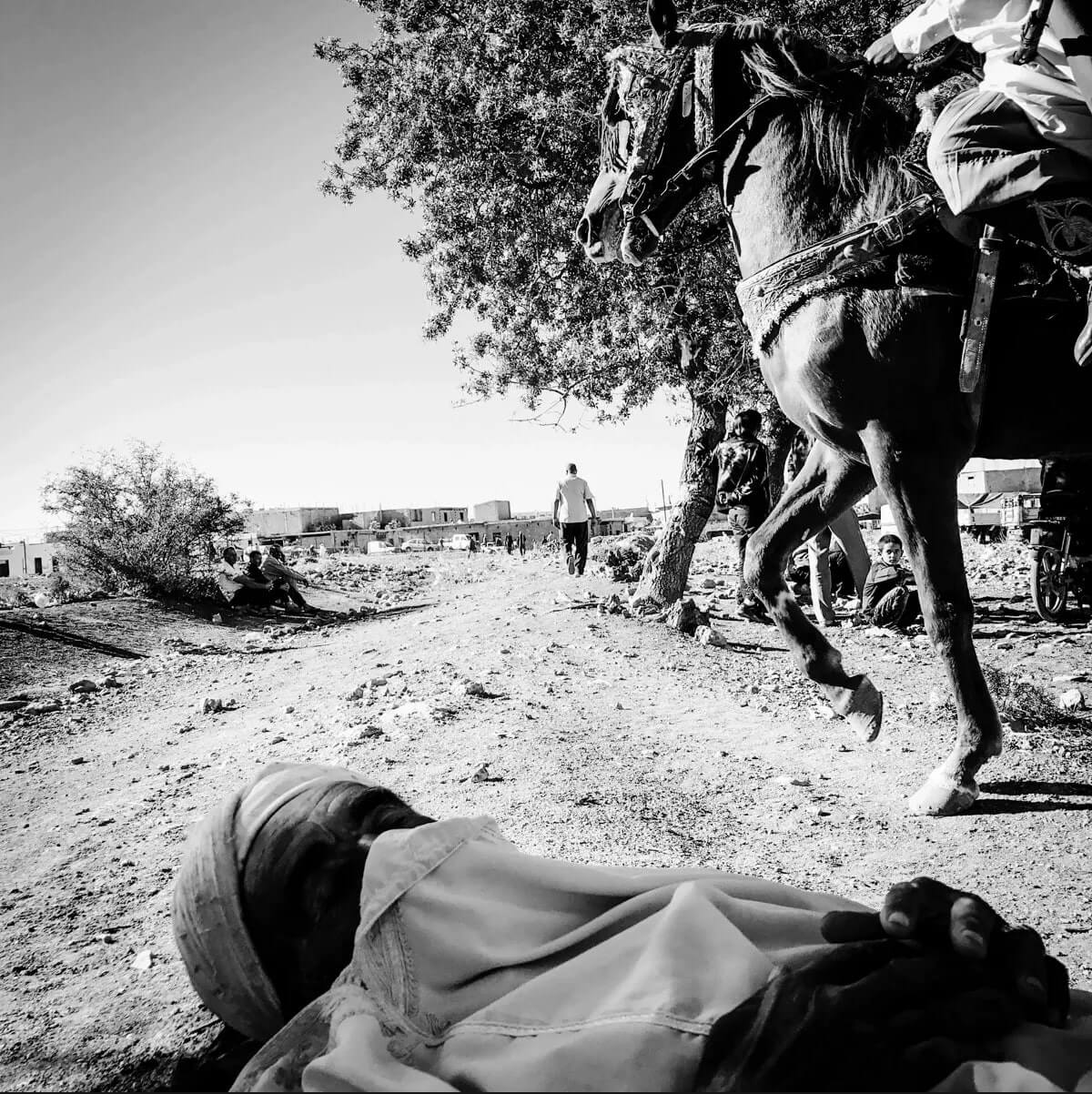
IMAGE COURTESY OF FETHI SAHRAOUI
www.fethisahraoui.ne / @fethi.sahraoui
From the series The Cult of Souls – ”Rural celebrations are seasonal festivals organized by the local people of different regions of Algeria to celebrate Muslim saints. The local name for a rural celebration is ‘Waâda,’ derived from the word ‘promise’ – a promise given by the local villagers to celebrate their devotion. These celebrations are more frequent in the Western part of the country, and they usually coincide with autumn, the season of grape harvesting. Those that have good harvests are expected to share their bounty, thought to bring another successful year, and thus, they become more like the creator by providing for others.
The preparation for festivities start from in the early morning by installing tents, but the waves of curious people start flooding after ‘Al sr’ prayers in the afternoon. Fantasia shows of synchronized racehorses end with simultaneous ceremonial shooting in the air by the cavaliers, as all the horses cross the finish line. Guesba music bands are omnipresent, with lyrics about love, betrayal, and adultery. They sing about all that concerns rural life and what differentiates it from city life. The singers constantly mock the lifestyle of the people of the city. Here you also find the peak of ecstasy in Hamdawa groups, a type of religious sect who perform their dances under the beats of Bendirs, encircled by a crowd of followers.
As a child, I grew up visiting rural celebrations with my family members, and I remember the festive atmosphere, the sounds of the music, and the dancing. When I started photography, these festivals were one of the first subjects that I documented. After many years of attending, I photographed a sort of concrete idea – the rural celebrations became my imaginary circus, my alternative world. Rural celebrations are a social phenomenon established to prospect the grace and benediction of God with the hope of a more beneficial harvesting season. Over time, it has become a whole system of amusement that fills the lack of places dedicated to that. There you can find what is joyous, strange, and saddening at the same moment and place – that is the circus of life.”
Editor’s comment: Bold framing, with the central figure walking into the distance, cropped horse and rider, and foreground man seemingly resting in the middle of the road. It captures a sense of confusion and quiet chaos – a document perhaps of the ‘everyday’ of rural Algerian life, but in a perplexing and intriguing way – the “circus of life” as Fethi puts it – that invites a curiosity in the viewer.
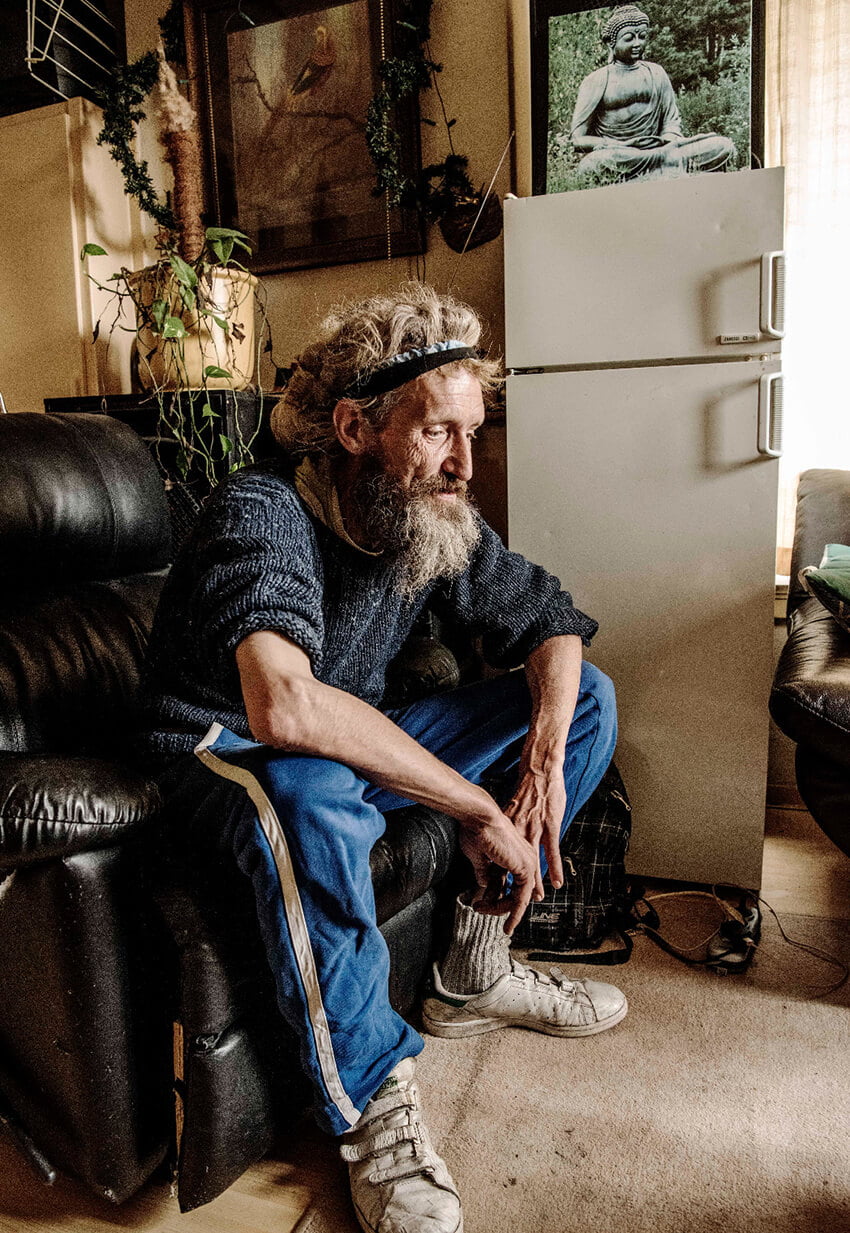
IMAGE COURTESY OF TON GROOT HAAR
www.groothaar.nl / @tongroothaar
From the series Tom – “Tom knows everyone in his city and everyone knows Tom. He calls himself ‘a strange guy, but social’. He is almost always cheerful. He sells his self-colored mandala cards on the street. He supplements his benefit with the proceeds. Especially to be able to buy his daily ‘ball of white’ and ‘ball of brown’, which he shares with friends. Social workers say he is schizophrenic. But he disagrees. “In another culture I was probably a shaman.””
Editor’s comment: Capturing one of the idiosyncratic, overlooked characters of life, Ton’s portrait has sensor noise that may not appeal to all viewers, but can be seen to add to the texture and tangibility of the shot. Captured in a thoughtful posture, there is a lovely nod to the image of Buddha, quietly watching over amongst the detritus of modern life.
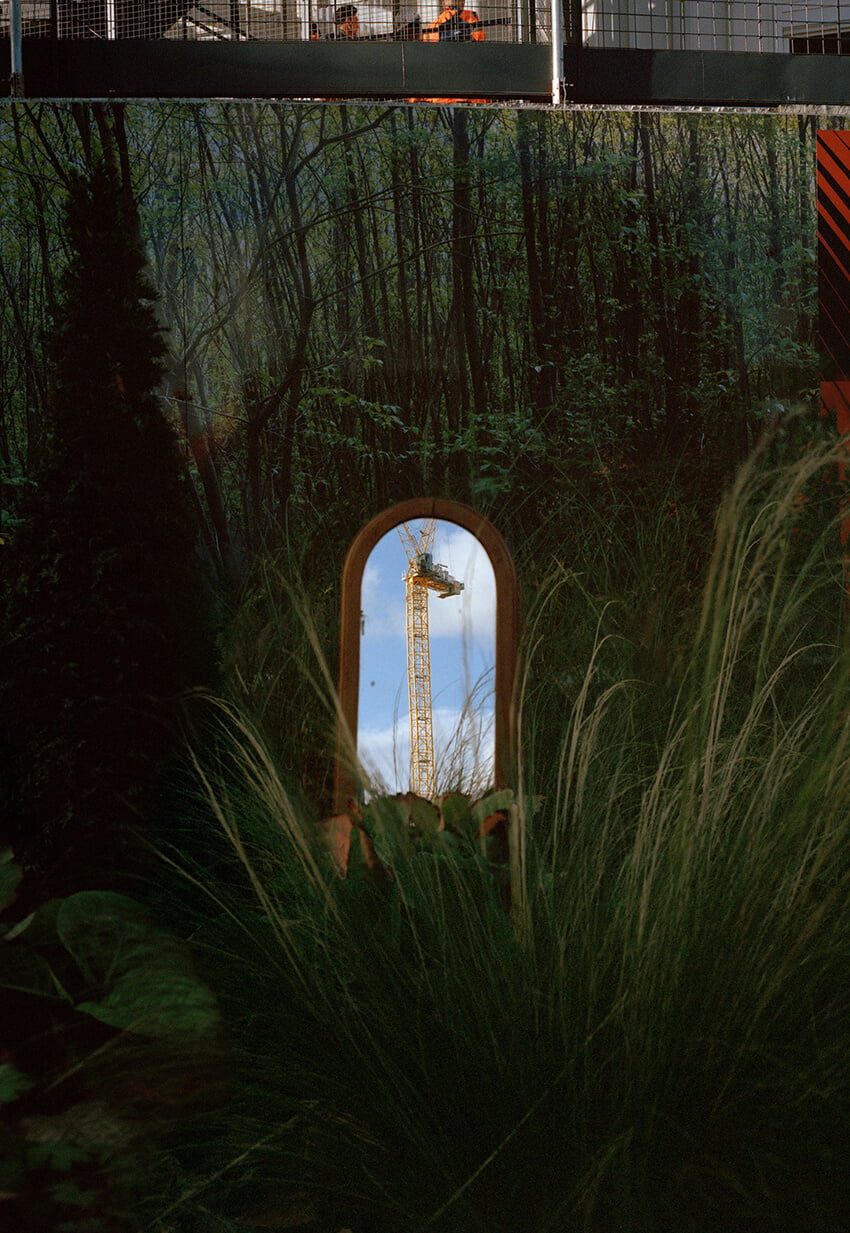
IMAGE COURTESY OF SINE ZHENG
www.sinezheng.com / @sine_xuanzheng
”With the development of urbanization, people gradually get lost in the dazzling steel forest. Surrounded human-made objects create an obscured appearance in which people are easily losing sight of the boundary between reality and illusion. We feel at ease in modern life with sufficient resources and even try to build a fake vision of nature in our city life, making an illusion in which people perceive a simulative environmental image.”
Editor’s comment: An interesting image that plays with layers and perception to highlight the strange reality of how we simultaneously yearn for nature and remove it from our lives.
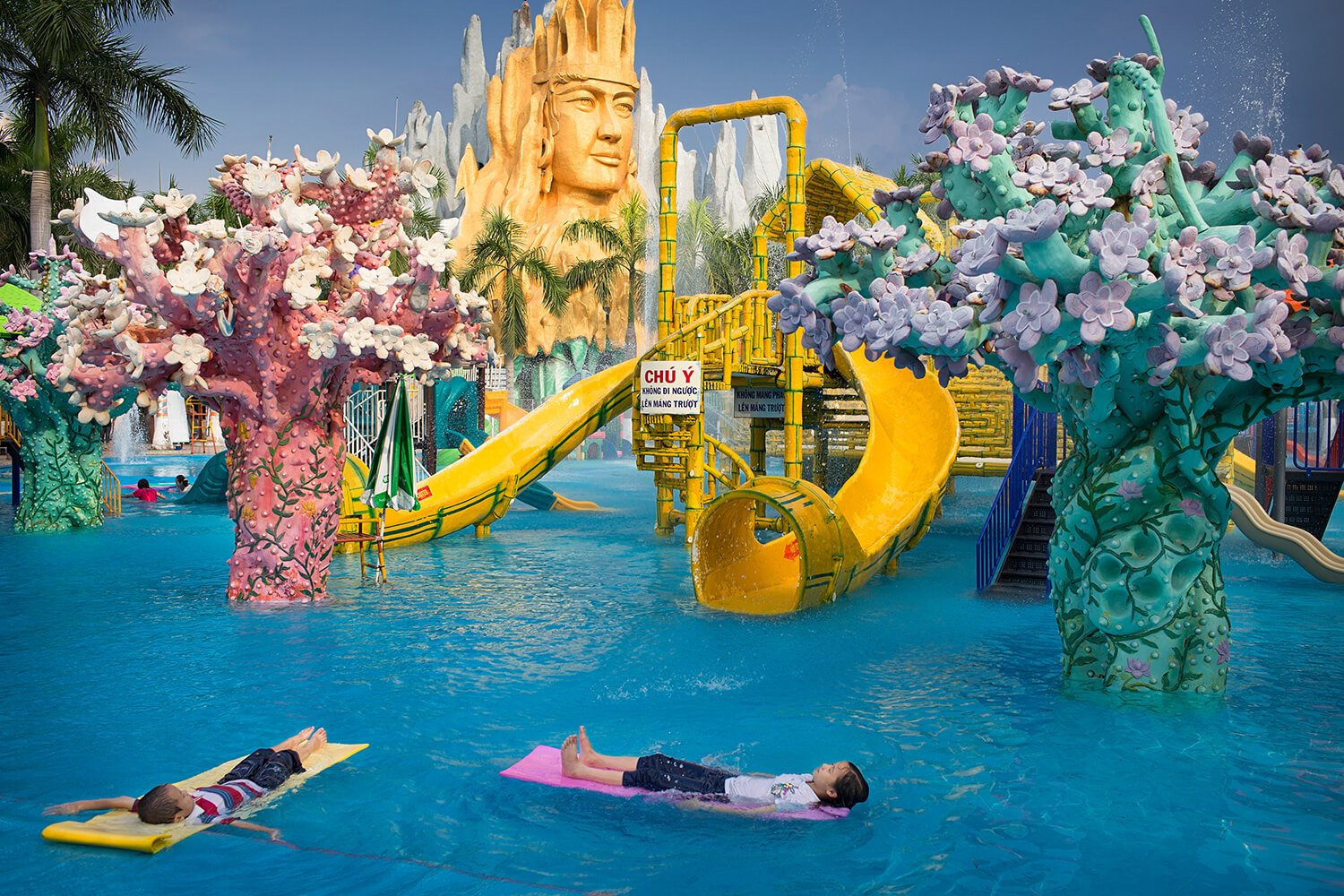
IMAGE COURTESY OF ARSENIY NESKHODIMOV
www.neskhodimov.com / @neskhodimov
”Ho Chi Minh City, Vietnam.”
Editor’s comment: An eye-catching view into leisure in Vietnam, with a candy-colored, psychedelic approximation of nature, and perfect placement of these two children soaking it all in.
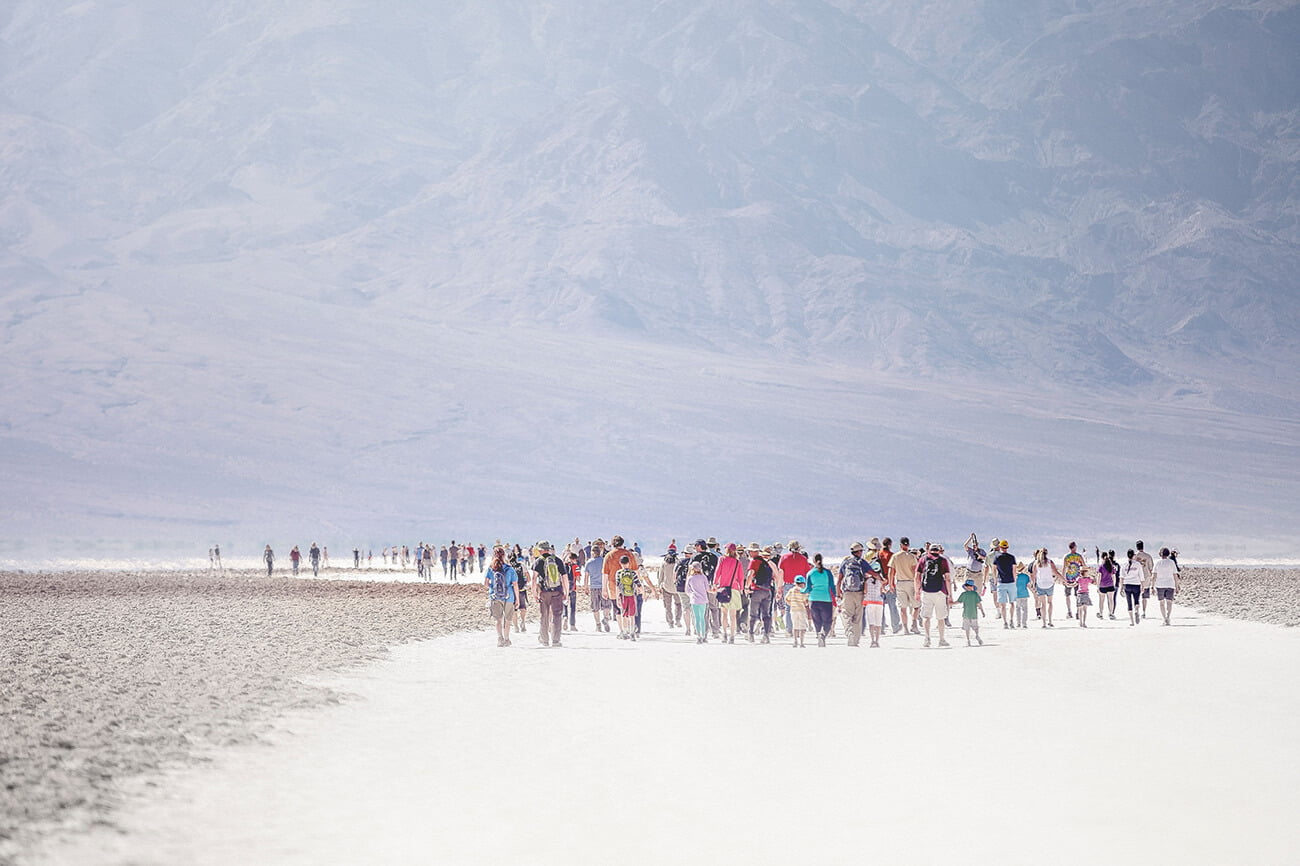
IMAGE COURTESY OF HENK KOSCHE
@henkkosche
”Titled Vivid Death Valley or Where are you Going, Mankind?
Our civilization seems to be in search of a sustainable lifestyle that preserves the foundations of human life and saves it from collapse. The picture shows “wealth tourists” at one of the driest, most inhospitable places on earth, Death Valley. What do you think we are looking for here?”
Editor’s comment: A thin strip of color in this vast, pale and unforgiving landscape of Death Valley, Henke’s image brings a clarity to the scale and power of nature, but also asks questions – to which his title alludes – of tourism and leisure. Not just of where we choose to go to, but of what we’re ultimately searching for.
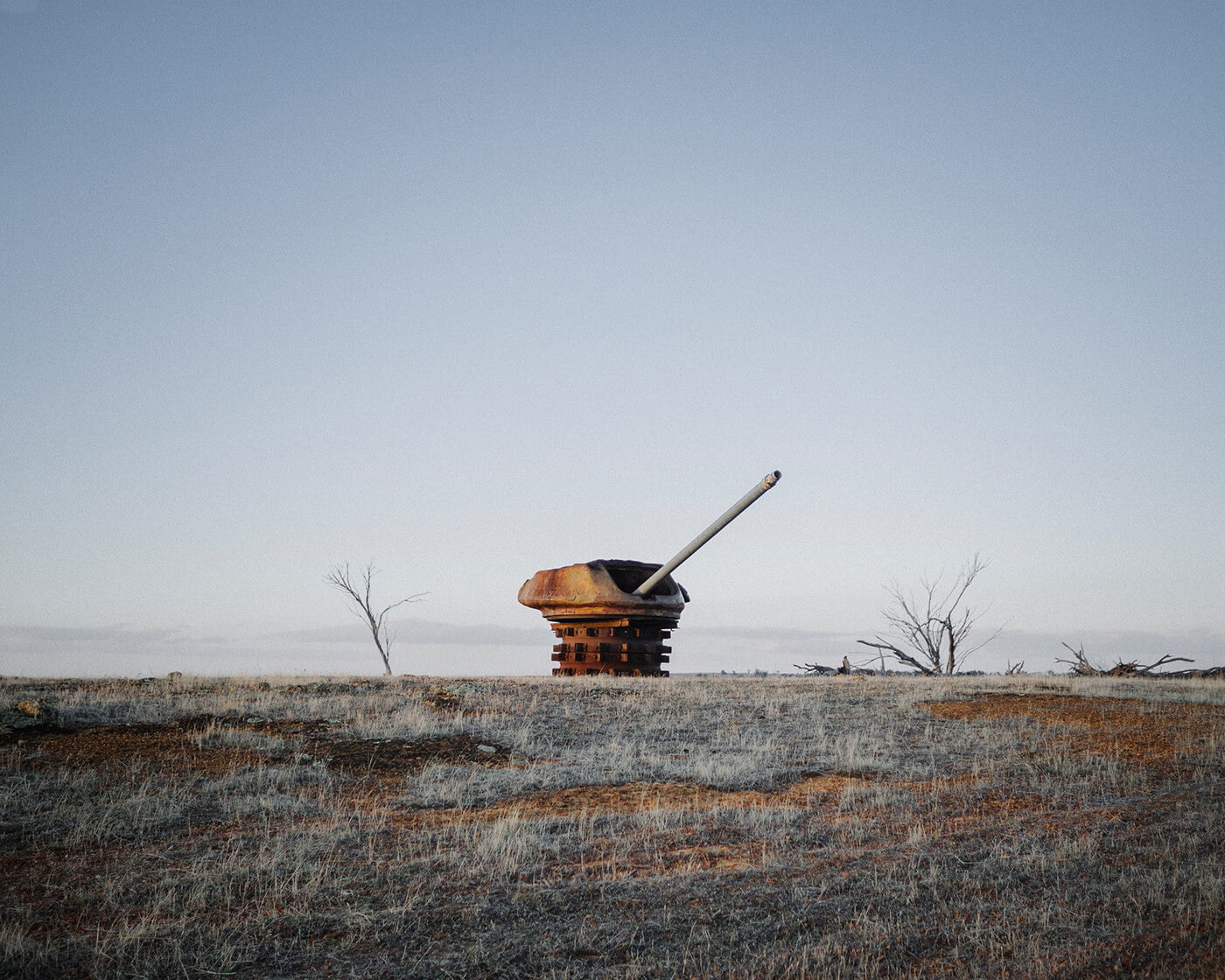
IMAGE COURTESY OF CLAUDIA CAPORN
@claudia_caporn
”Rural Australia is dying. It once used to be a thriving, prosperous area, with millions of Australians choosing the freedom of the bush over the crowded, fast paced urban life. This image is from a series that explores the disintegration of regional communities in Australia as a result of the unprecedented increase in rural-to-urban migration. This series documents the demise of Quairading, my hometown, and depicts the blue-collar people living lives of quiet desperation, portraying everyday struggle and ordinary tragedy, as remote and rural civilisations continue to be pushed to the precipice of extinction.”
Editor’s comment: Drawn in pale tones and with a stark beauty, this is nonetheless a sad image that speaks of loss and emptiness, and of the senseless destruction we enact upon each other as humans.
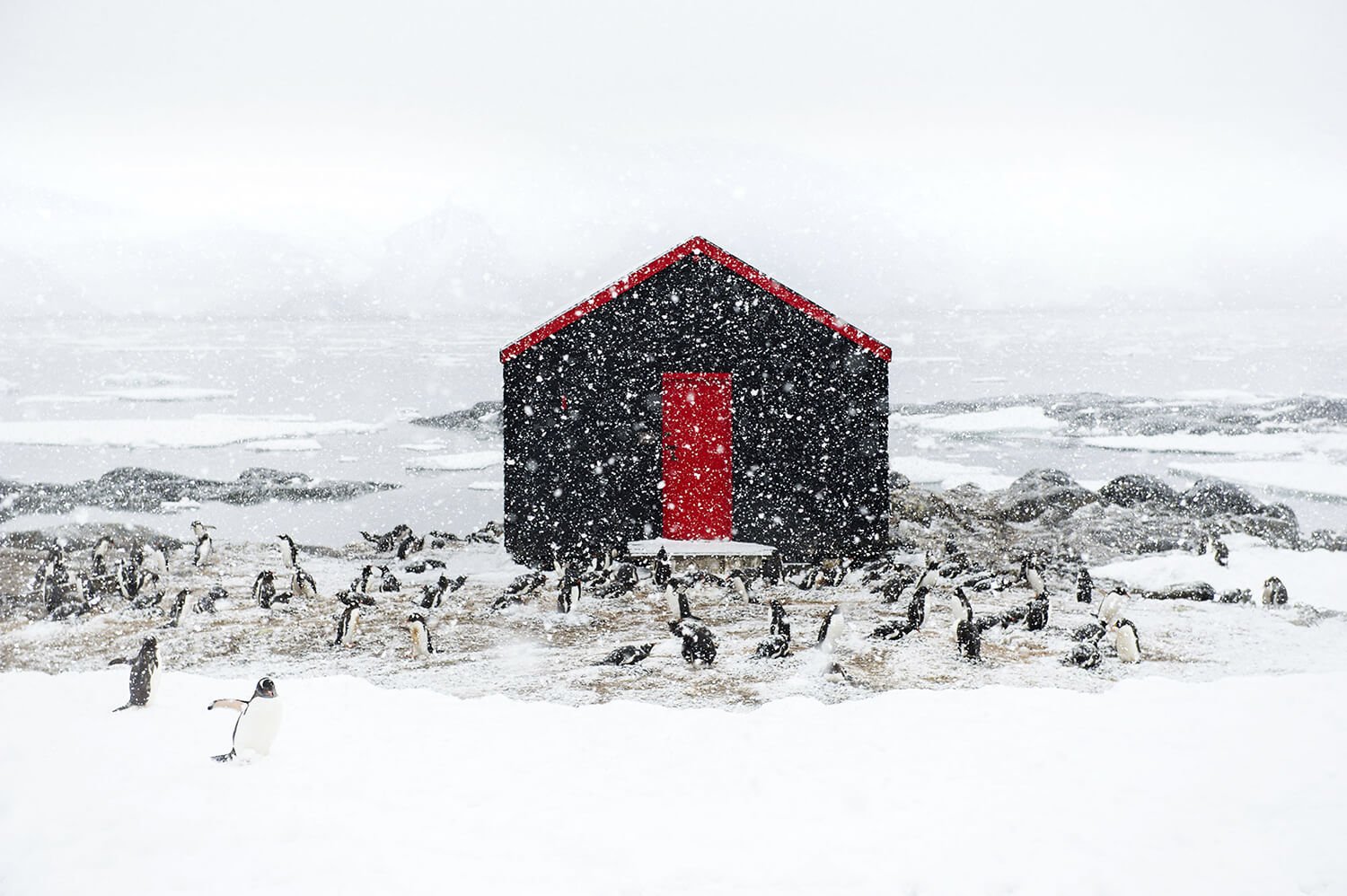
IMAGE COURTESY OF LORRAINE TURCI
www.lorraineturci.com / @lorraineturci
From the series POLARIS ARTEFACTS, marks of Civilization in Antarctic – “Huts, research stations, shelters, monuments or maritime landmarks: human constructions in the Antarctic Peninsula are a benchmark for a world that the imagination still thinks of as immaculate. Landmarks might be sensed here as pre-ruins, next to vestiges, nearly to be sculptures. The human presence looks incongruous in these remote areas. Fine and coloured geometries lost in white stretches that we imagine extending to infinity. In contrast with the constructions of native people, the constructions of conquest are here scientific, industrial. Almost cosmonaut: humans on another planet.”
Editor’s comment: Isolated in this unforgiving frozen landscape, penguins crowd around this Antarctic research hut like it is some alien structure. And in some ways it is, transported here from what might as well be another world. Built in the pursuit of scientific understanding, it is a reminder on the one hand of just how much there is still to know about our planet, and on the other of how precious the few remaining untouched places are.
